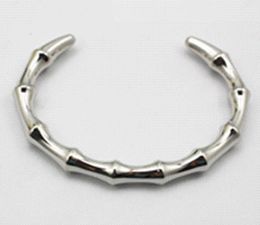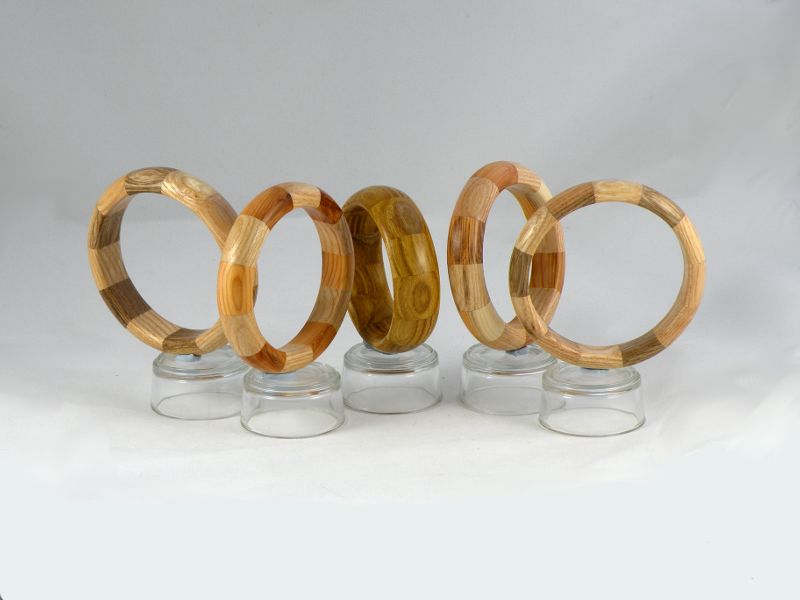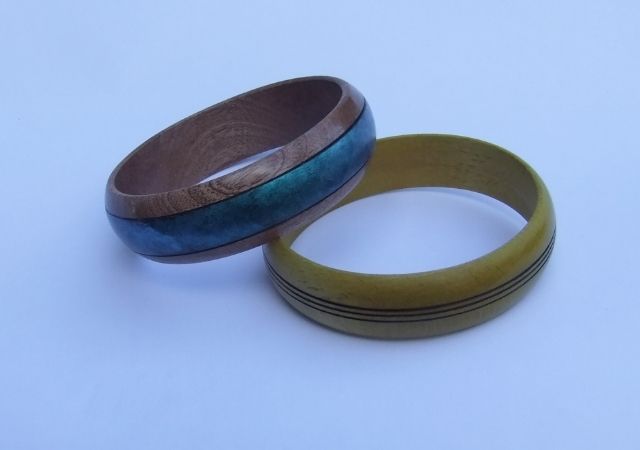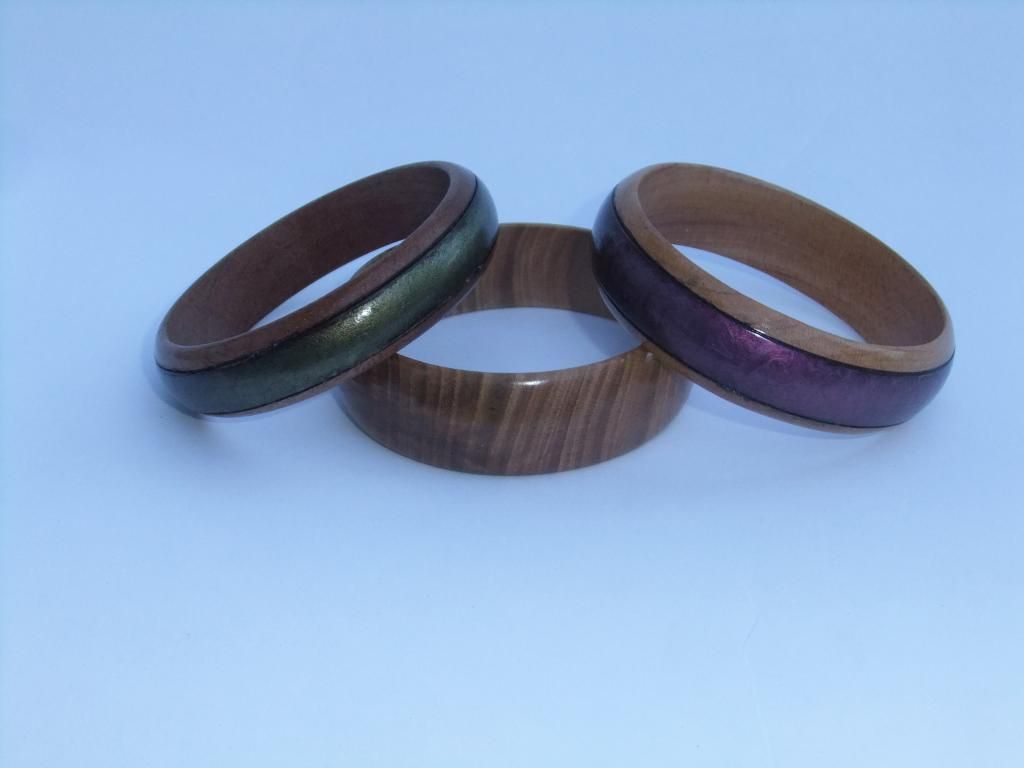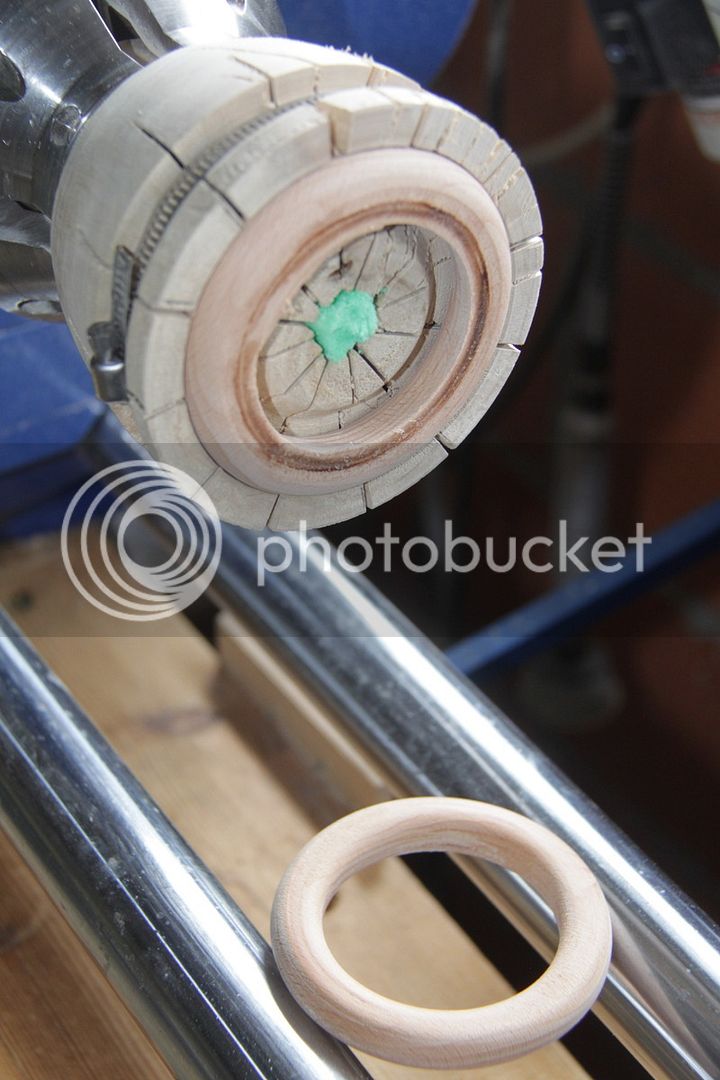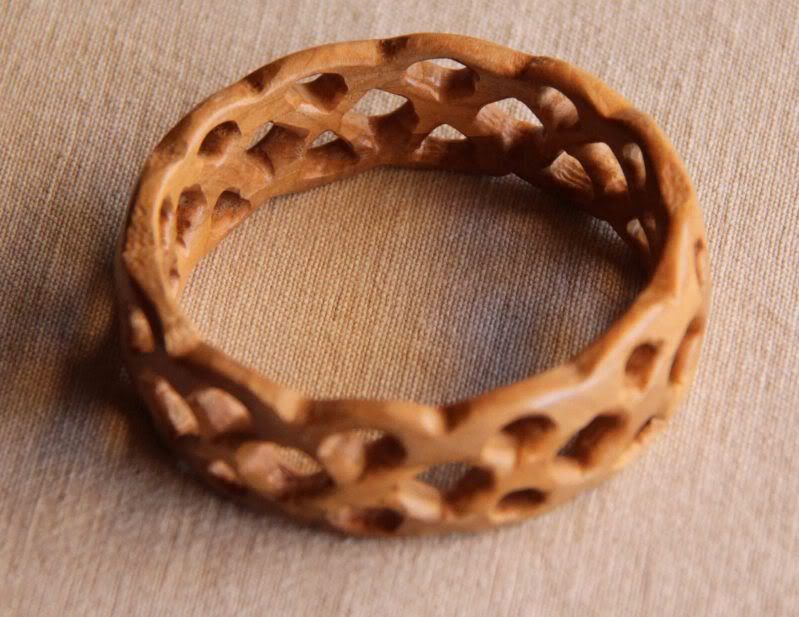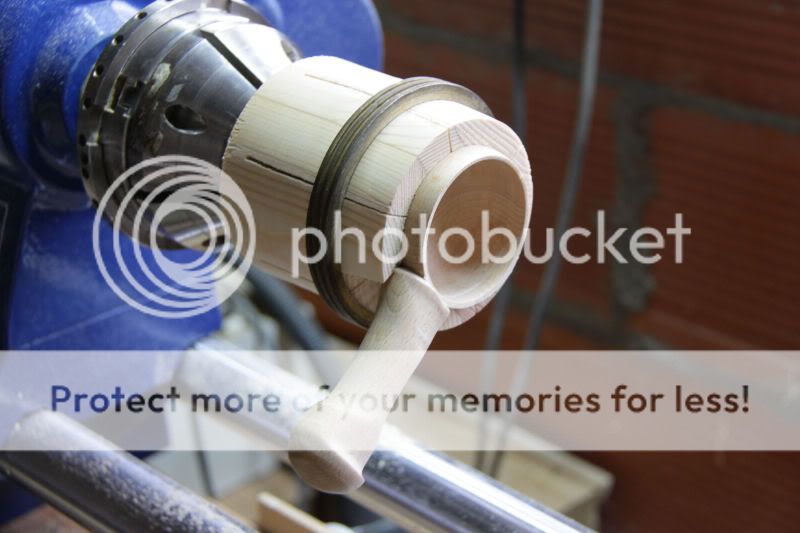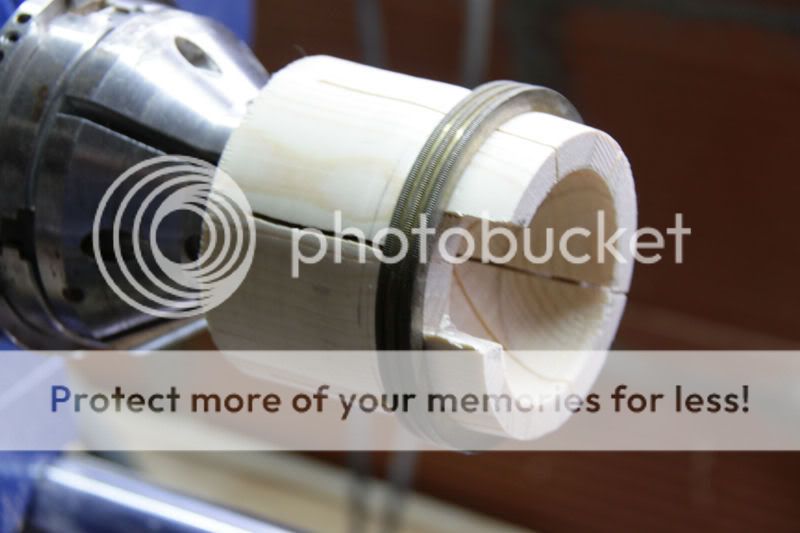I found it difficult to figure out how to shape the inside of this bangle and have two more to do (smaller and more rounded) ..so advice would be welcome.
(I started out doing the outside with a flat skew chisel which was fine but on the inside I found myself leaning right over the bed and pointing the skew back at the inside of the piece to complete the inside of the curve which felt very awkward and probably dangerous, so I gave up on that and just made some small steps in (parallel to the bed) with a 1/8" parting tool then sanded the steps out)

(I started out doing the outside with a flat skew chisel which was fine but on the inside I found myself leaning right over the bed and pointing the skew back at the inside of the piece to complete the inside of the curve which felt very awkward and probably dangerous, so I gave up on that and just made some small steps in (parallel to the bed) with a 1/8" parting tool then sanded the steps out)




